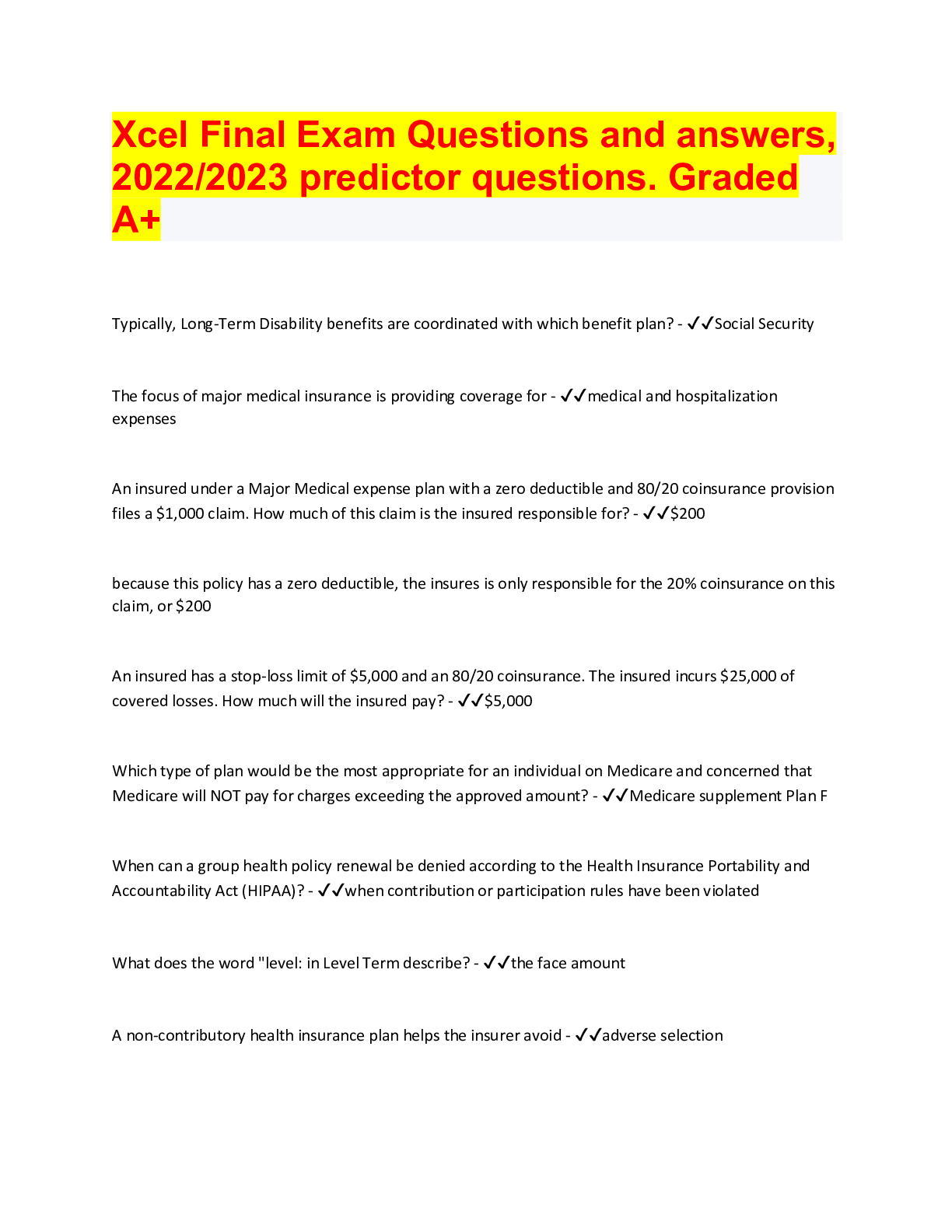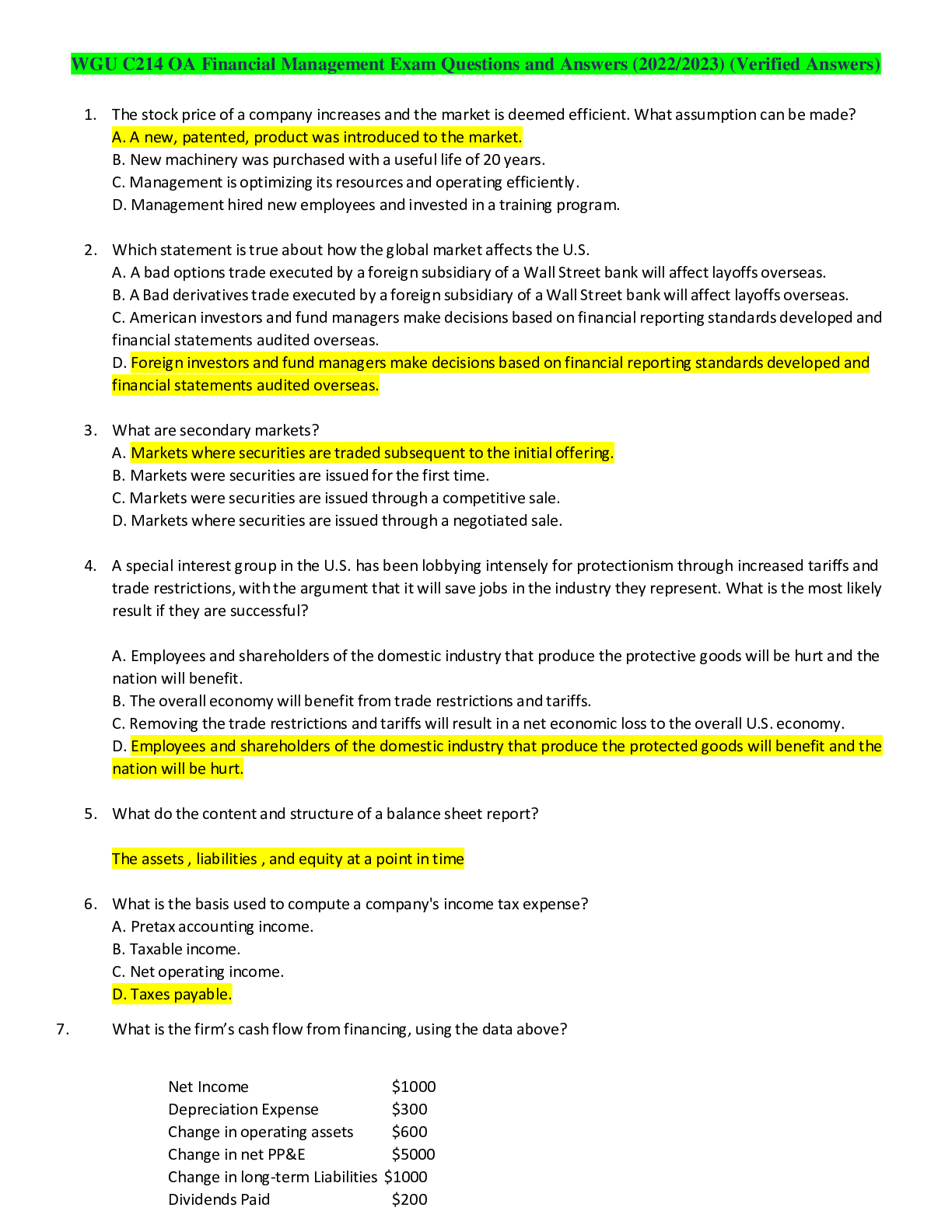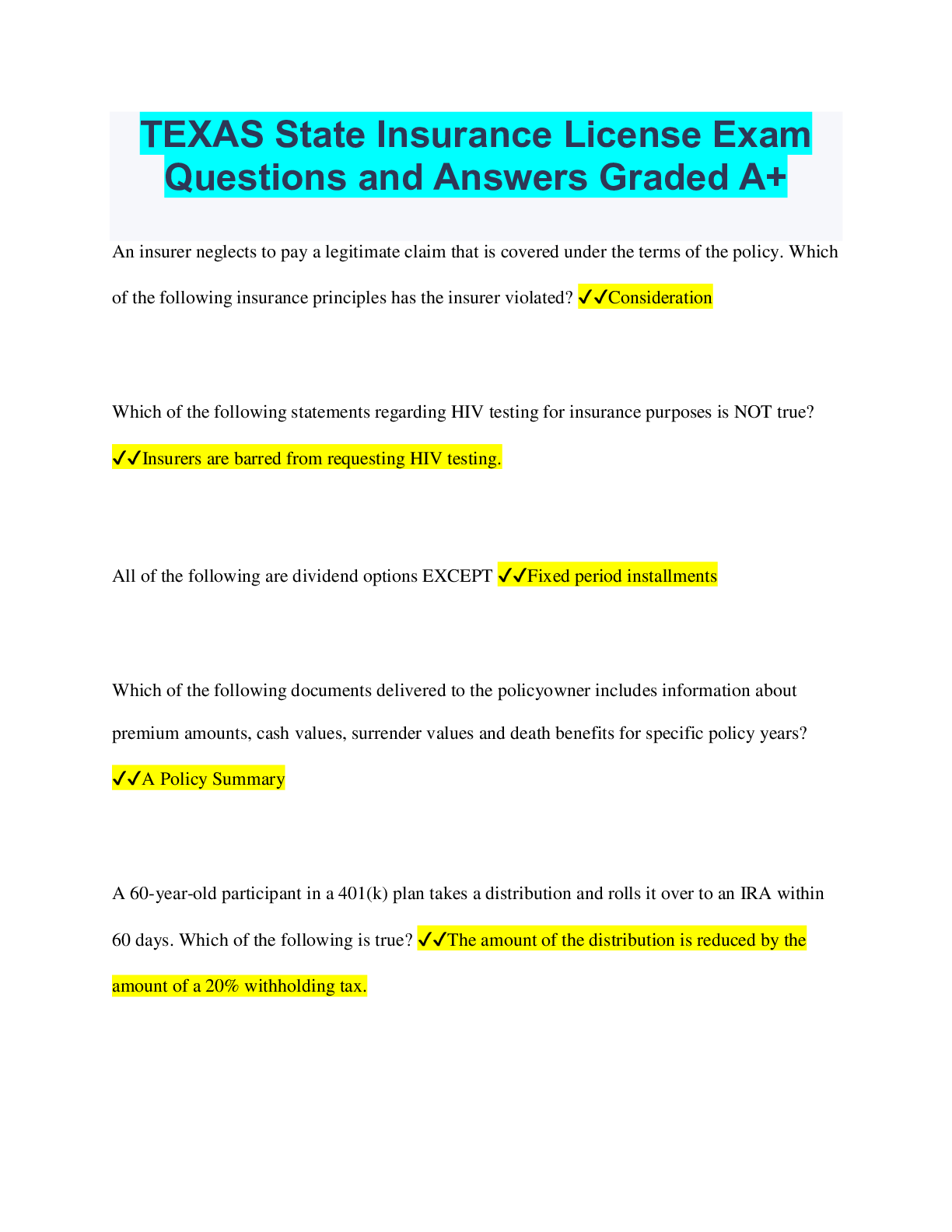Social Sciences > QUESTIONS & ANSWERS > ASWB Bachelors Exam questions and answers. Top mark Document. Graded A+ (All)
ASWB Bachelors Exam questions and answers. Top mark Document. Graded A+
Document Content and Description Below
When should self determination be limited? - ✔✔Only in situations where it would cause harm to a client or others. Jean Piaget - ✔✔Developmental psychologist best known for his theory of co... gnitive development. Theory states that children learn through interaction in the environment. Nature vs nurture - ✔✔Whether cognitive development is mainly determined by a clients innate qualities (nature), or by his personal experiences (nurture). Many experts avoid this question today. Social development on micro level - ✔✔Learning how to behave and interact well with others. Relies on managing feelings. Social development on a macro level - ✔✔Commitment that development processes need to benefit people. Recognizes the way people interact in groups and society. Social development - ✔✔Change in social institutions. Spiritual growth and development stages - ✔✔-Unwilling to accept a will greater than their own. -Blind faith in authority figures, world is divided into good and evil. -Scientific skepticism and questioning. -Enjoys mystery and beauty of existence. Bio psychosocial-spiritual-cultural challenges older people are faced with - ✔✔Health and physical abilities, accessing affordable-high quality health care, decreased economic security, increased vulnerability to abuse and exploitation, and loss of meaningful roles. Health care issues with adults 80+ - ✔✔Communication: Encourage to express feelings, stay positive Health: monitor closely, promote self care, ensure nutrition, stress, and activity levels Safety:ensure safe living Development - ✔✔Product of the elaborate interplay of biological, psychological, spiritual, and social influences John Bowlby - ✔✔Originated Attachment Theory. Attachment: defined by Bowlby - ✔✔A lasting psychological connectedness that can be understood within an evolutionary context in which a caregiver provides safety and security to a child. Child is pre-programmed to create attachments. Monotropy - ✔✔One primary attachment figure. Acts as a secure base for exploring the world. Learned behavior attachment - ✔✔Child will form an attachment to whoever feeds it. Child finds comfort in food, through classical conditioning, finds comfort in feeder. Child uses operant conditioning to get what it wants. Stranger anxiety - ✔✔Crying when an unfamiliar person tries to hold child, begins between 5-9 months. Intensifies at age 1, stops around age 2. Separation anxiety - ✔✔Beings 6-8 months, peaks at 14-18 months, resolved by 24-36 months. Upset when caregiver leaves sight. Separation anxiety disorder - ✔✔Characterized by excessive worrying about being away from caregiver. Occurs in later childhood. Maslow's hierarchy of needs - ✔✔Clients are motivated to meet certain needs, when one is filled they seek the next one. (physiological, safety, social, esteem, self-actualization) Physiological needs - ✔✔Maintain the physical organism. Biological needs such as food/water/oxygen/ temperature. Safety needs - ✔✔Need to feel safe from harm/danger/threat. Social needs - ✔✔Friendship, intimacy, affection, and love are needed. Esteem needs - ✔✔Need of a stable, firmly based level of self respect and respect from others. Self-actualization - ✔✔Ongoing process of need to be oneself, act consistently with whom one is. Humanistic approach - ✔✔clients have the capacity to grow, change, and adapt. Strength - ✔✔Any ability that helps and individual to confront and deal with a stressful life situation and to grow from it. Strengths perspective - ✔✔Focuses on understanding clients on the basis of their strengths and resources and mobilizing the resources to improve their situations. Defense mechanisms - ✔✔Behaviors that protect people from anxiety. Automatic, involuntary, usually unconscious psychological activities to exclude unacceptable thoughts, urges, threats, and impulses form awareness for fear of disapproval, punishment, or other negative outcomes. (NOT coping mechanisms-voluntary) Examples of defense mechanisms - ✔✔Turning against self, Splitting, repression... (SEE PAGE 57) Erikson - ✔✔Psychosocial model (8 stages) Group work - ✔✔Method of social work that helps individuals enhance their social functioning as well as cope with their problems. Individuals help each other change/learn social roles, social worker helps change environment/behavior. Individual self-actualization occurs when: - ✔✔Release of feelings that block social performance, support from others, reappraisal of self. Psychodrama - ✔✔Treatment approach in which roles are enacted in a group context Stages of group development - ✔✔Preaffiliation (forming), Power and Control (storming), Intimacy (norming), Differentiation (performing), Termination (adjourning). Individuals to keep out of group work - ✔✔Clients in crisis, suicidal, compulsive, needs attentjion, psychotic, paranoid. Groupthink - ✔✔Group makes faulty decisions because of group pressure. Group polarization - ✔✔Discussion strengthens a dominant point of view and results in a shift to a more extreme position than any of the members would adopt on their own. Family systems approach - ✔✔In order to understand a family system, a social worker must look at the family as a whole rather than on its members. Family systems theory - ✔✔All parts of the family are interrelated. Must look at the relationships and interactions between members. Families strive for homeostasis. Equifinality - ✔✔Ability of the family system to accomplish the same goals through different routes. Interdependence - ✔✔Individual family members and the subsystems are mutually influenced and dependent upon one another. What happens to one member, influences other members. System theory terms - ✔✔SEE PAGE 64 Ecological perspective - ✔✔Focus of intervention is the interface between client and a clients environment Role theory - ✔✔Views day to day social behavior as individuals carrying out their defined roles. Structural-functional perspective - ✔✔Sees a role as the set of expectations that society places on a client. Interactionist perspective - ✔✔Viewing a role as something that is constantly negotiated between individuals. Role ambiguity - ✔✔Lack of clarity of role Role complementarity - ✔✔Role is carried out in an expected way (ex. parent-child) Role discomplementarity - ✔✔Role expectations of others differs from ones own. Role reversal - ✔✔When two or more individuals switch roles Role conflict - ✔✔incompatible or conflicting expectations Gender role theory - ✔✔Gender differences are socially constructed and a product of socialization experiences. Cultural identity - ✔✔Identity of a group or culture of an individual who is influenced by his self identification with that group. Three stages of ethnic identity development - ✔✔Unexamined cultural/ethnic identity, cultural identity search, cultural identity achievement. Classic model of cultural identity development stages - ✔✔Pre-encounter(unaware), encounter(thought provoking), immersion(exploration), internalization and commitment Collateral sources - ✔✔family, friends, other agencies, physicians, and so on- provide vital info on prior services and length/severity of situation. Must get informed consent from client. When to use collateral sources - ✔✔When credibility and validity of info obtained from a client is questionable. Triangulation - ✔✔Using information from multiple sources. Sexual history - ✔✔Number/gender of partners, practices, protections, and prevention. Records info can be pulled from - ✔✔Employment, medical, educational, sexual Problem identification - ✔✔Determining the problem targeted for intervention in exact definable terms, when it occurs, and it's magnitude. (Never client) Prioritizing services depends on: - ✔✔Client desire/motivation, treatment modality, agency setting, resources, and funding. Evidence that a client is resistant - ✔✔Limited communication, preoccupied, editing thoughts, canceling, payment delay Reasons for resistance - ✔✔Guilt, shame,fear change, external barriers Ego strength - ✔✔Ability of the ego to effectively deal with the demands of the id, superego, and reality. Basis of resilience. Continuum of care - ✔✔Clients enter treatment and step up [Show More]
Last updated: 1 year ago
Preview 1 out of 13 pages

Also available in bundle (1)
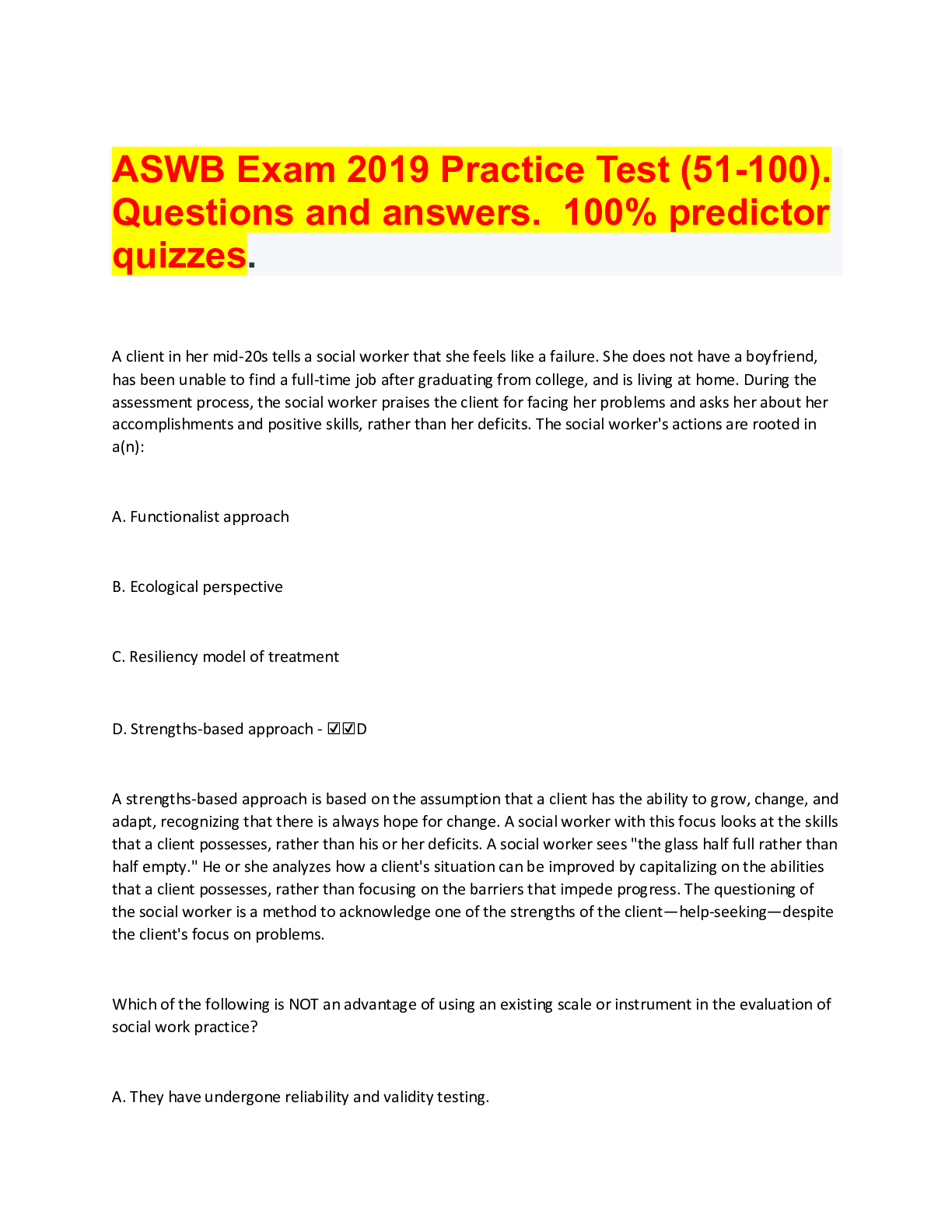
ASWB EXAMS bundle,
Questions with accurate answers. Predictor questions and answers
By bundleHub Solution guider 1 year ago
$40
12
Reviews( 0 )
Document information
Connected school, study & course
About the document
Uploaded On
Aug 15, 2022
Number of pages
13
Written in
Additional information
This document has been written for:
Uploaded
Aug 15, 2022
Downloads
0
Views
88





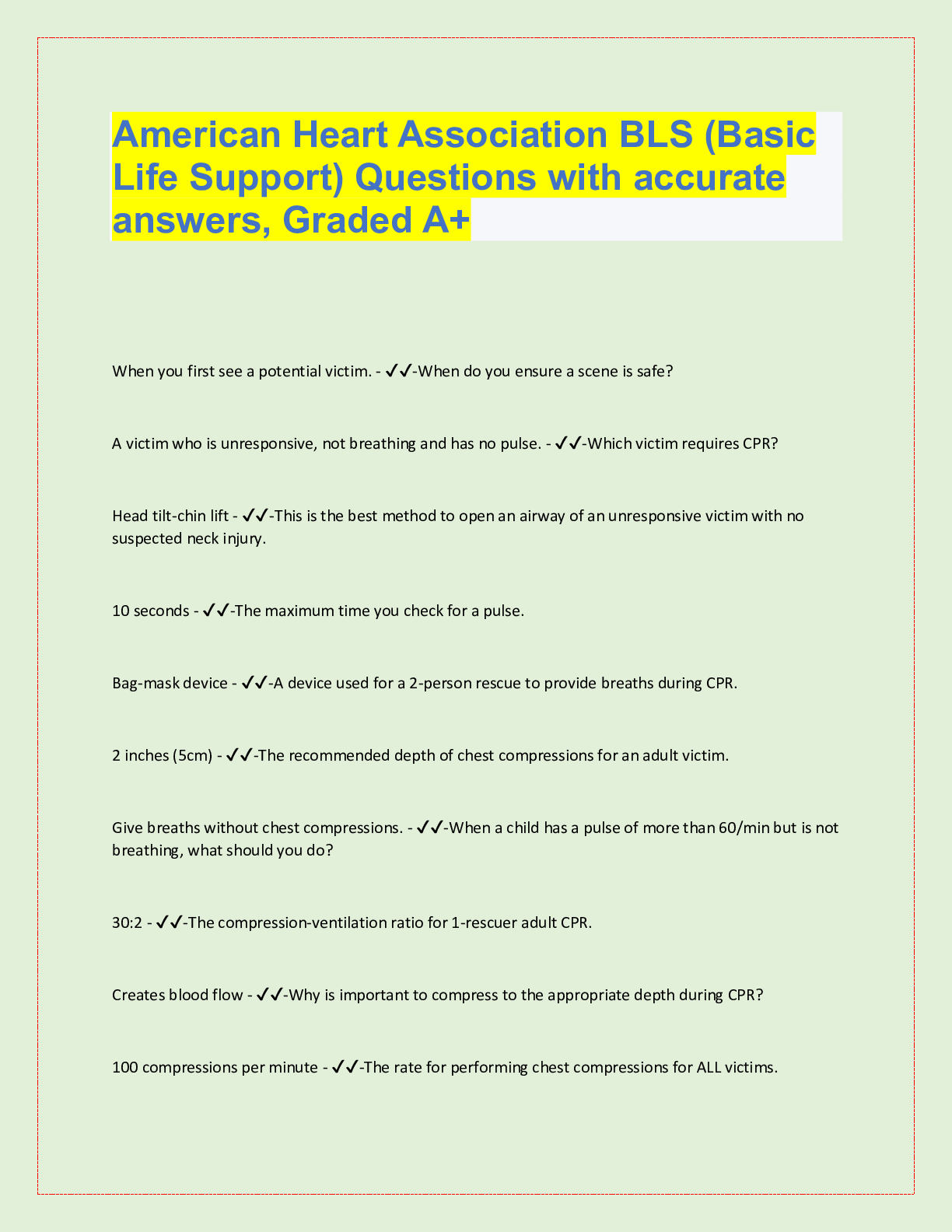


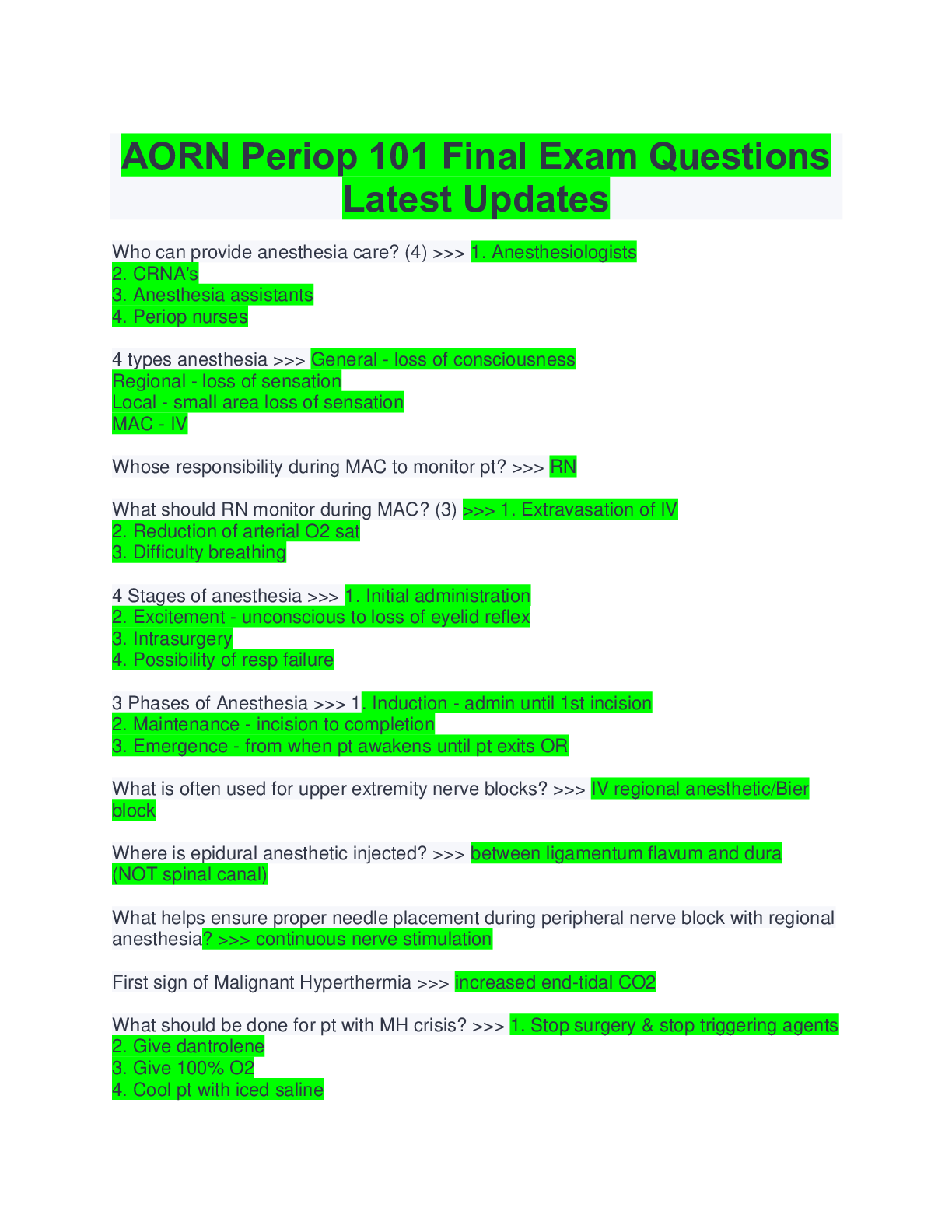






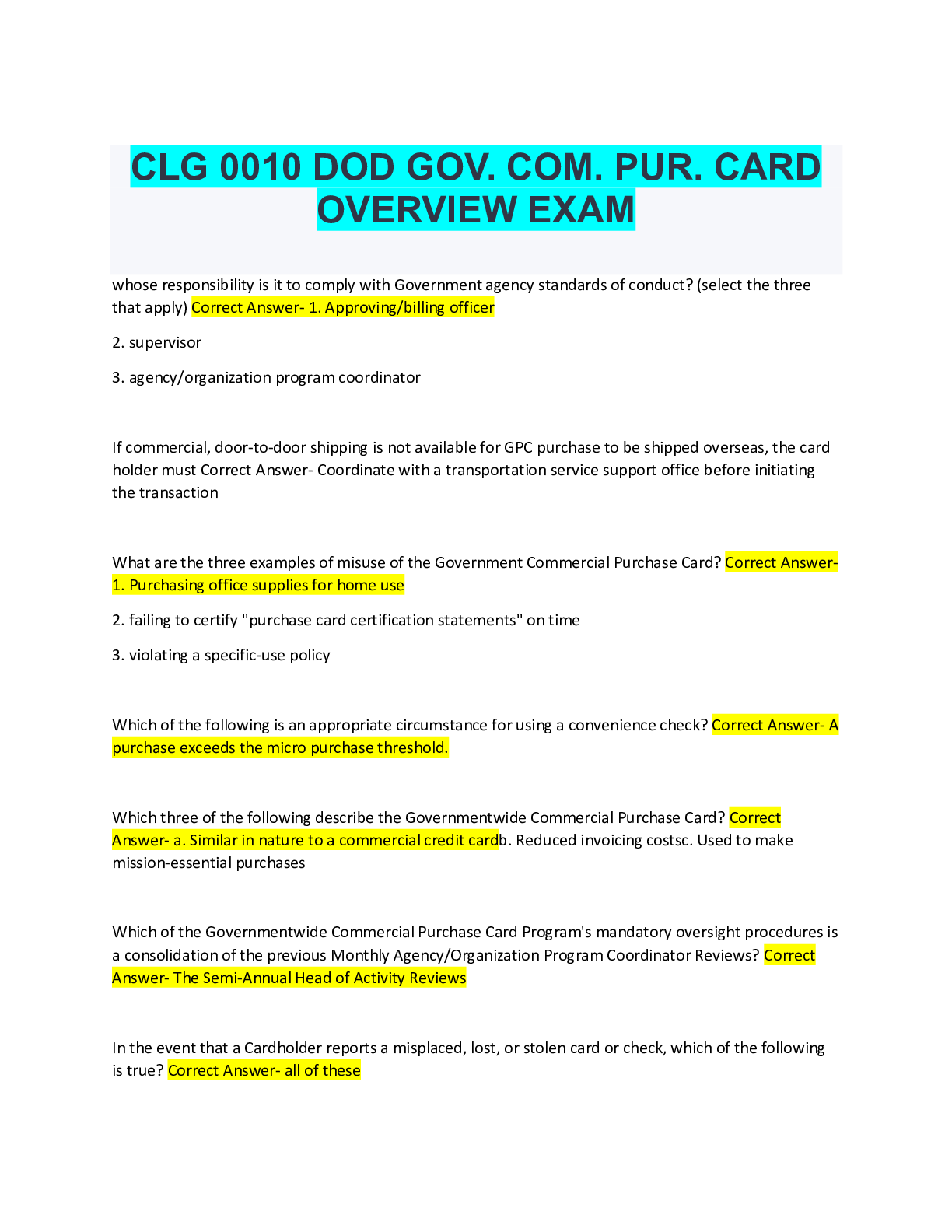
.png)

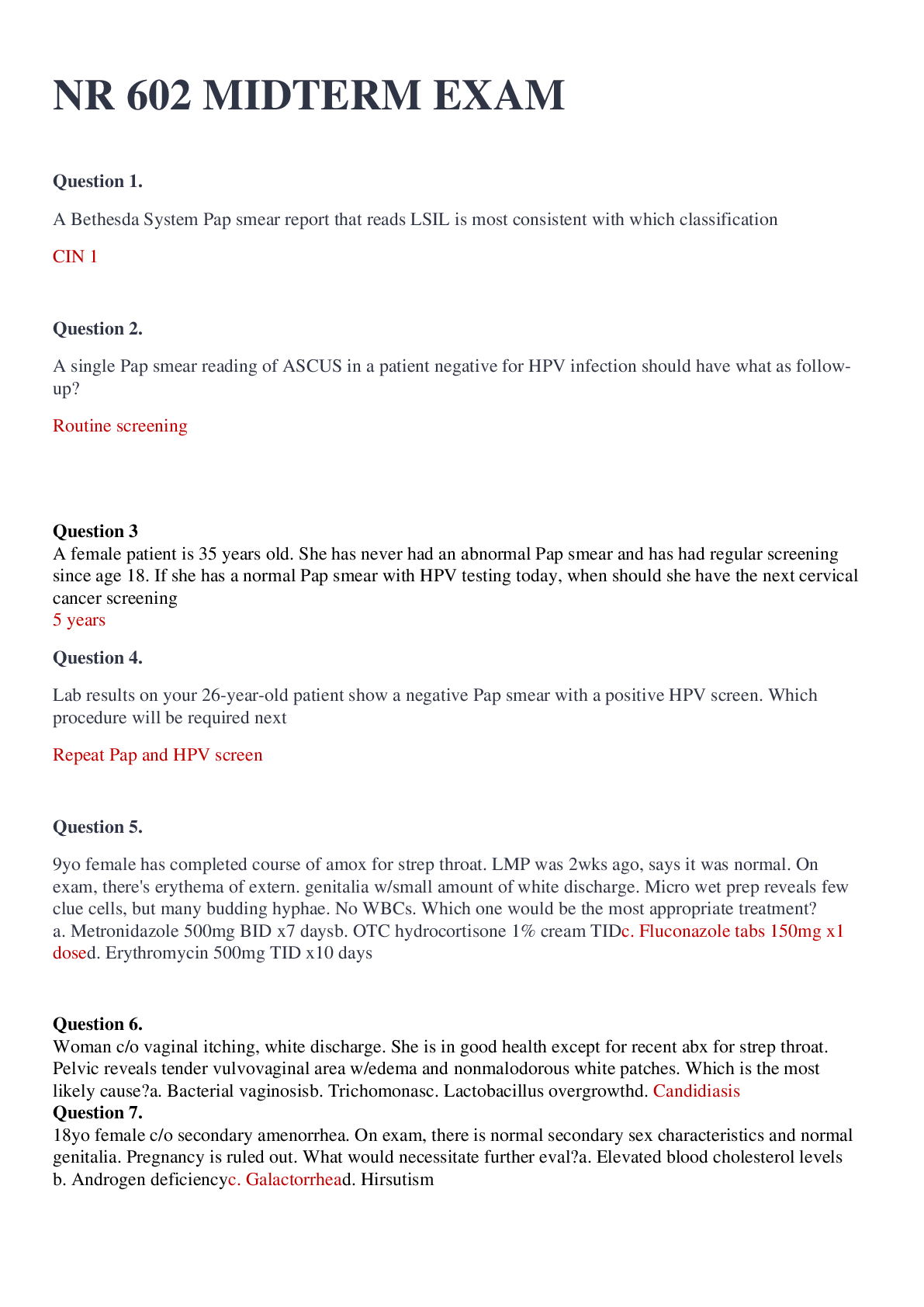
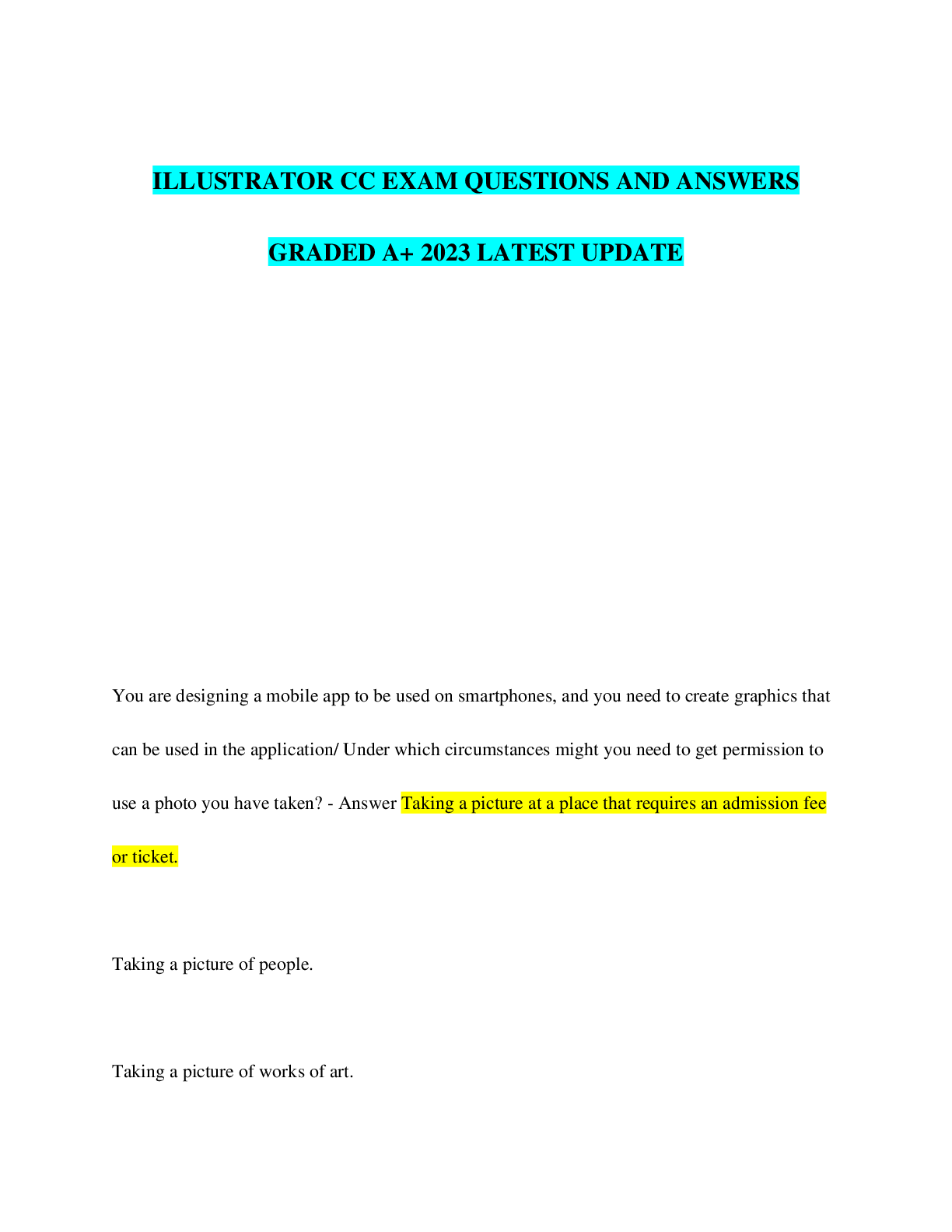
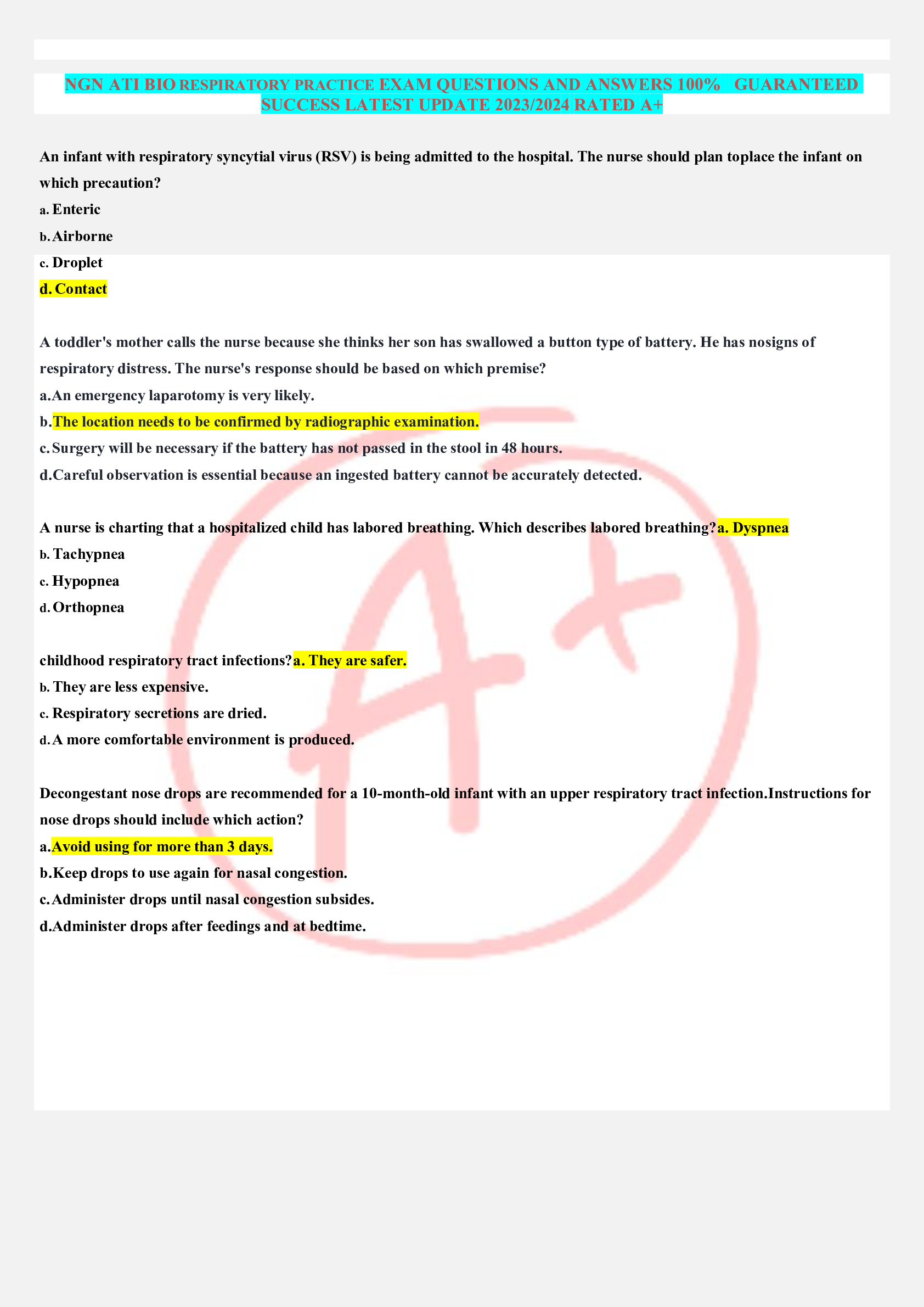
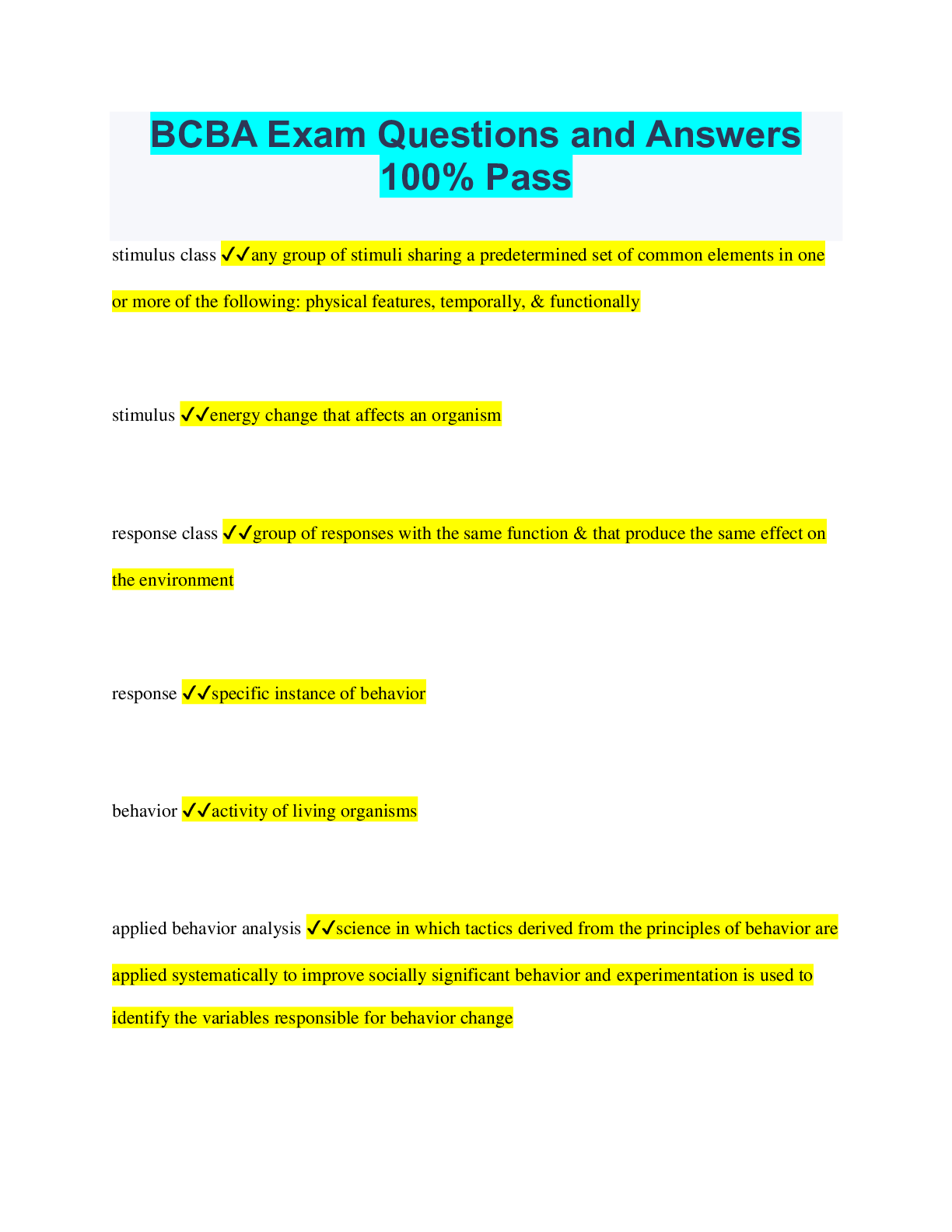
.png)
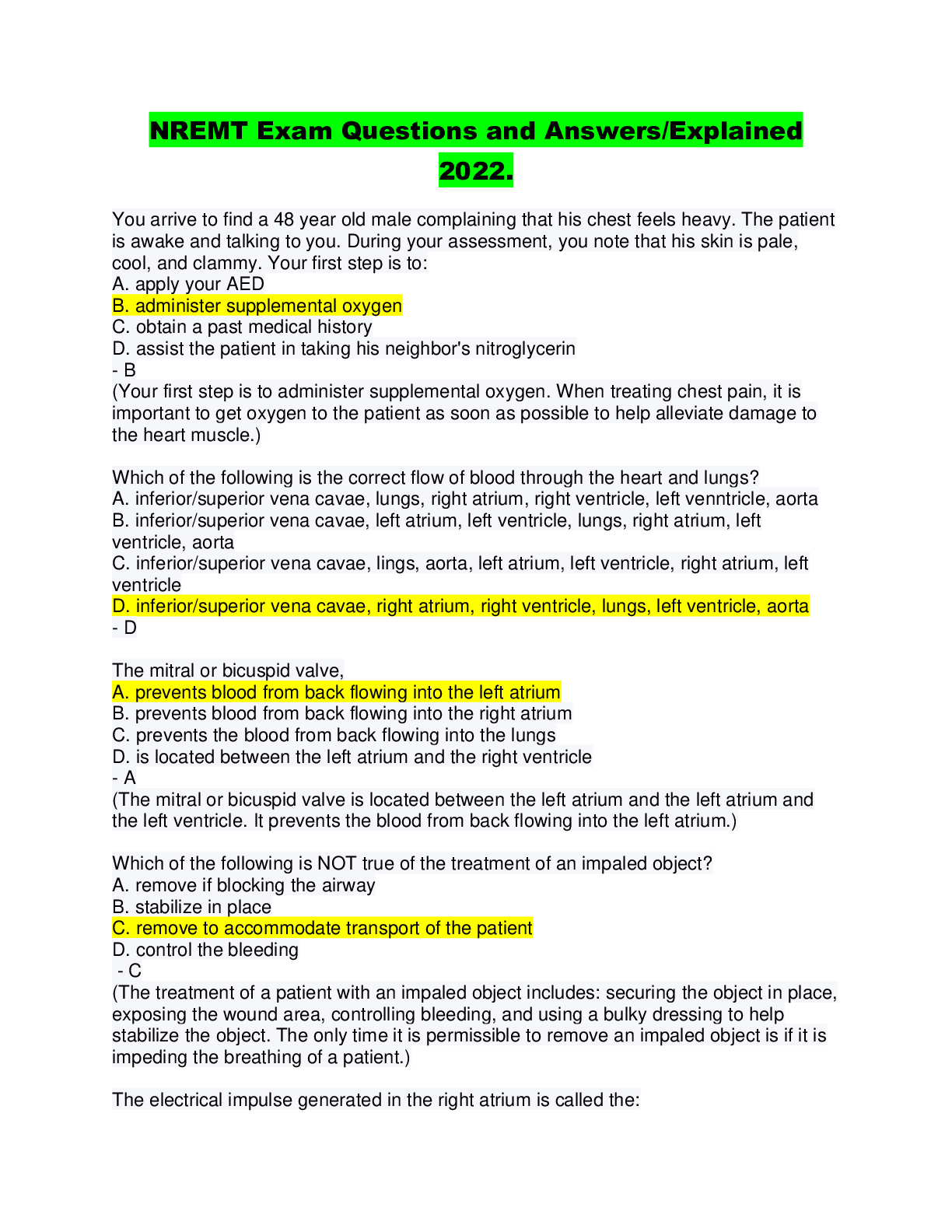
.png)
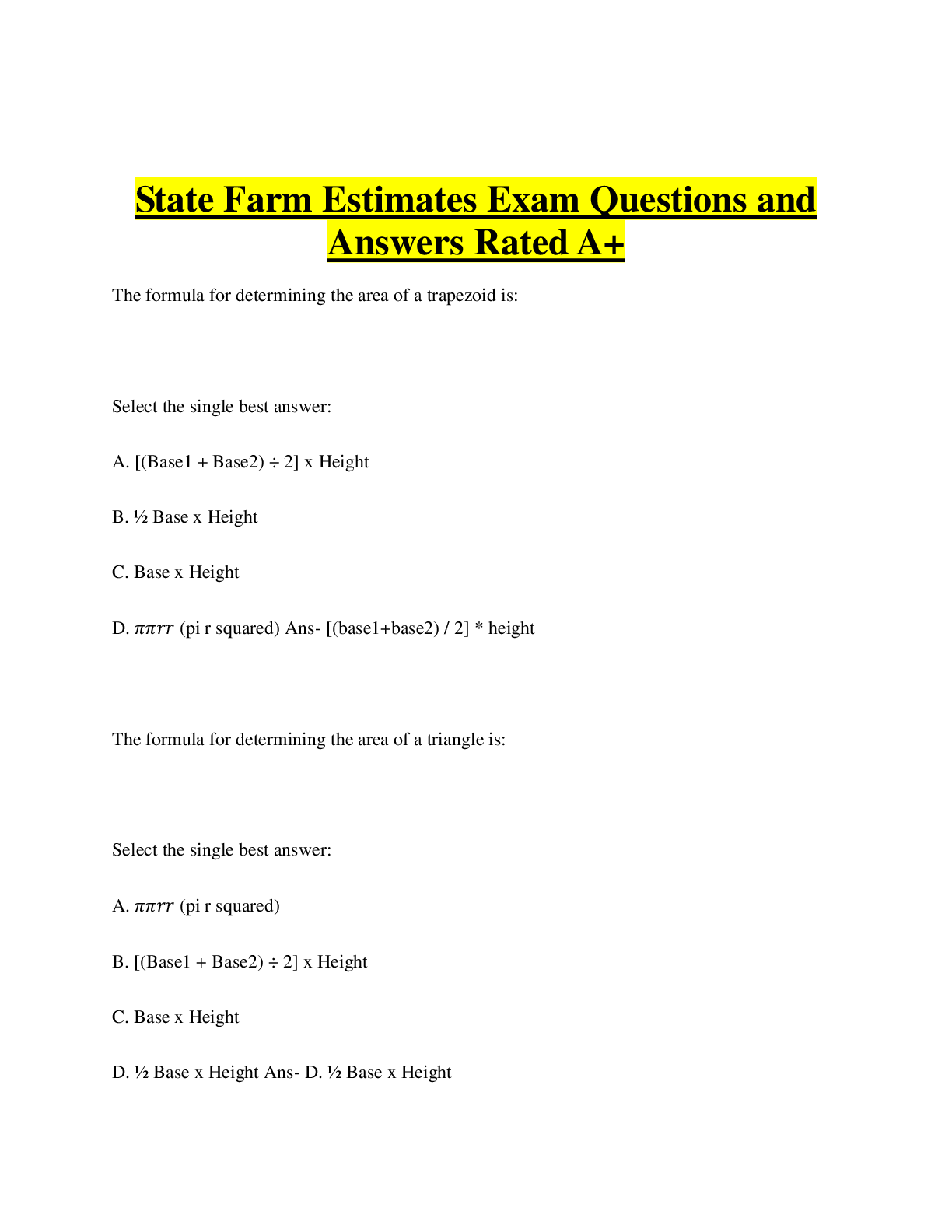
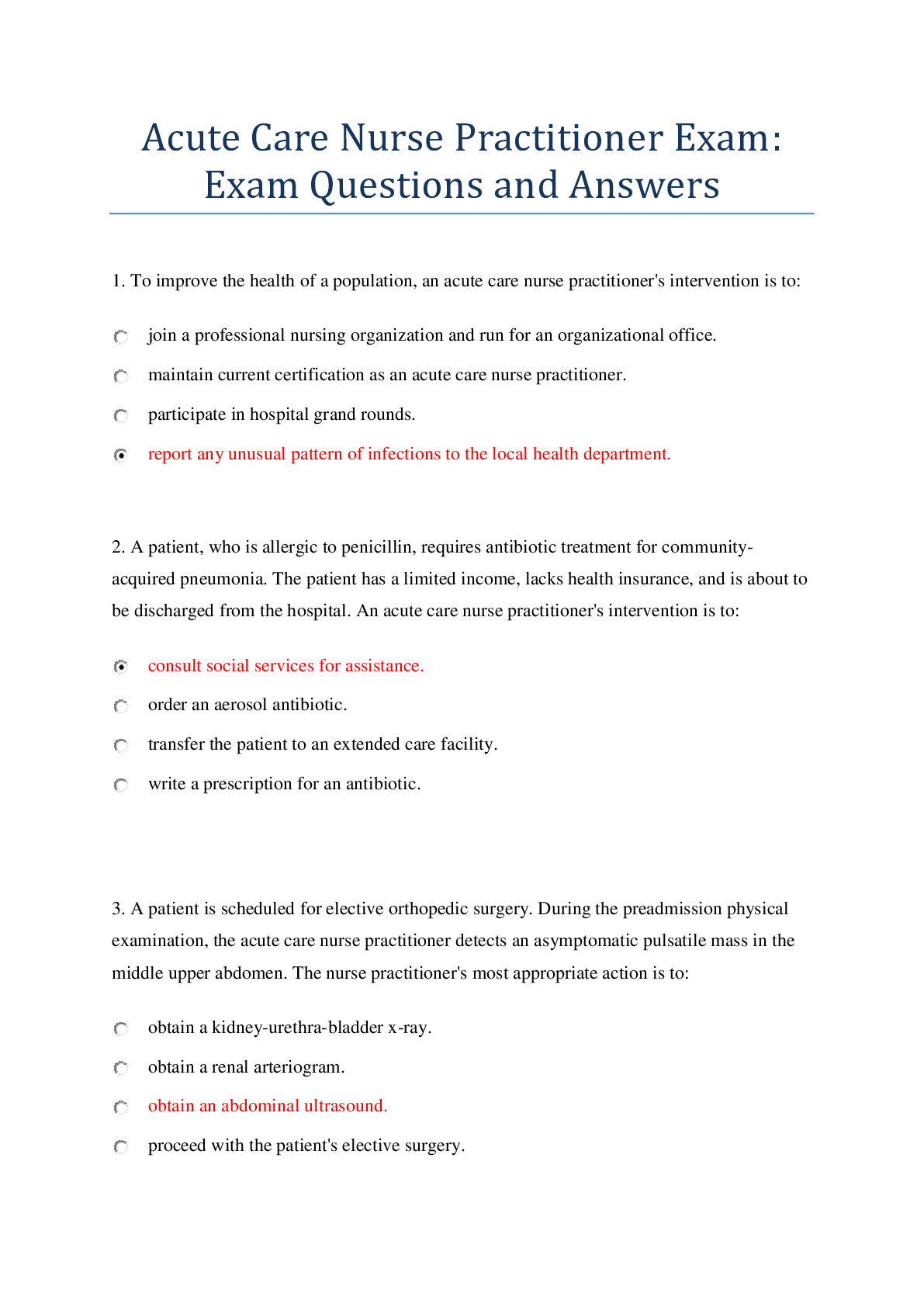
.png)
